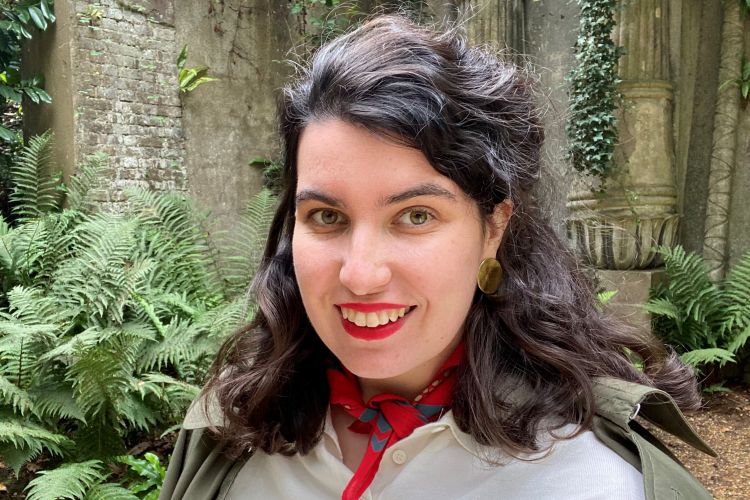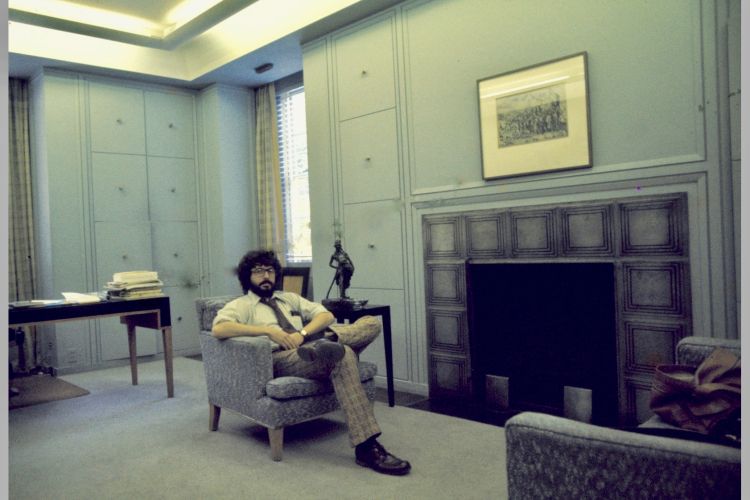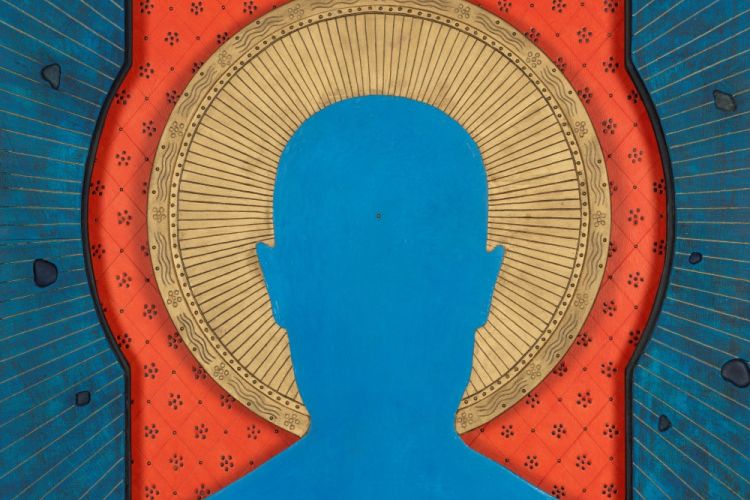The Pennsylvania Academy of the Fine Arts Opens Artists as Cultivators
Exhibition, which runs through July 7, 2024, includes “Cultivator: The Curatorial and Artistic Practice of Ruth Fine in Context,” a special focus on Ruth Fine, in partnership with (re)FOCUS
PHILADELPHIA – February 13, 2024 - The Pennsylvania Academy of the Fine Arts (PAFA) has opened the exhibition, Artists as Cultivators, an examination of how artists have fostered critical social dialogues over three centuries through their use of nature as a subject, theme, and material. The exhibition is curated by Leah Triplett Harrington, PAFA Director of Exhibitions and Contemporary Curatorial Initiatives and Dr. Anna O. Marley, PAFA Chief of Curatorial Affairs, and fills the entirety of PAFA’s 1876 National Historic Landmark Building. Artists as Cultivators is on view through July 7, 2024.
Building upon two previous PAFA exhibitions, Rising Sun: Artists in an Uncertain America (2023) and The Artist’s Garden: American Impressionism and the Garden Movement (2015), Artists as Cultivators presents 120 drawings, paintings, prints, sculpture, and digital installations, selected from PAFA’s permanent collection, that reveal how American artists have cultivated discourse, care, critique, and change by way of engagement with nature. In tandem with Artists as Cultivators, the Von Hess Works on Paper gallery within the Historic Landmark Building will feature a special focus, “Cultivator: The Curatorial and Artistic Practice of Ruth Fine in Context,” as part of (re)FOCUS, the citywide celebration of women artists.
When the Pennsylvania Academy of the Fine Arts (PAFA) was founded in 1805 by a group of artists and civic leaders to “promote the cultivation of the Fine Arts, in the United States of America,” it was a mission that was both nationalistic and deeply specific in terms of Philadelphia civic and artistic creation. The natural world was mobilized as a symbol for nationalist expansion in early 19th century landscape paintings and as idealized gardens in the Progressive era in the late 19th and early 20th centuries. Artists working in the later 20th century until today increasingly grapple with the impacts of industrial expansion, environmental resource extraction, and suburban sprawl.
“This is an expansive exhibition, bringing together works spanning 1798 to today,” says Marley. “The diversity of artists and materials included in this show is astounding, with landscape paintings by Frederic Church and Albert Bierstadt to contemporary visions of the natural and human made worlds of Dyani White Hawk and Marie Watt. With 120 works in the exhibition ranging from watercolors and prints to large scale video installations and sculpture there is something for every lover of American art to enjoy. “
Adds Harrington, “Artists as Cultivators demonstrates the incredible depth and breadth of the PAFA collection, which enables our unique ability to create new stories of American art. I am so excited that this is my first exhibition with PAFA and with it we get to uplift PAFA’s artist-founded past as a place for the cultivation of fine arts nationwide while amplifying the phenomenal diversity of the collection.”
“We are honored to be part of (re)FOCUS,” says PAFA President Eric Pryor. “With PAFA’s long history of collecting and exhibiting the work of women artists we are particularly thrilled to celebrate the curatorial and artistic career of Ruth Fine, who curated our landmark Norman Lewis show in 2015, stewarded the donation of the Vogel Collection to PAFA, and has gifted over 100 prints to the institution.”
Artists as Cultivators is organized into three thematic sections.
Connectivity
Dyani White Hawk’s large-scale, immersive video installation RELATIVE (2023), commissioned by PAFA for Rising Sun: Artists in an Uncertain America, inspires this section, highlighting connectedness across peoples, geographies, and ecologies. As White Hawk stated in an interview for the Rising Sun catalog, “We’re all connected, and if we’re not able to recognize our relatedness across humanity, we’ll never be able to learn how to live in peace and healthy cohabitation. The same goes for all life. If we can’t recognize that the health and well-being of the animal life and the land itself is inextricably related to our own health and well-being, all life will suffer.”
Curae
The Latin word cura, or curae, is the root of the word “to curate,” meaning to care for or to cure. Here, “curae” explores how the practice of curating and collecting is a practice not only of organization, but of care. As The Artist’s Garden demonstrated, artists and gardeners are both cultivators of a kind. Curators and institutions can be cultivators as well, providing environments where art and artists can grow and thrive. Inspired by the artistic and curatorial practice of Philadelphia printmaker and curator Ruth Fine, this section imagines how curators and artists create community, nurture artistic innovation, and use nature or ecosystems as inspiration for growth and connectivity. Alison Saar’s Hygiea, originally commissioned for Rising Sun, is a multi-media installation affirming the critical role of care in maintaining healthy, correlative communities.
Converge
Minerva Cuevas’s The End (2016) introduces this section which asks: how does nature become a contentious site for social dialogue? How does a myth become a landscape, and how is a landscape then seen as a reality? Using artists as our guide we explore how representations of nature can create national mythologies of an untouched Eden, as in Albert Bierstadt’s Niagara Falls. Using the visual language created by 19th century artists, contemporary landscape painters like Cuevas can reframe these myths to critique not only nationalistic formations of landscape, but the devastating consequences of transforming the natural non-human world into a projected fantasy of American landscape. Cuevas, like Dyani White Hawk, whose video work is included elsewhere in the exhibition, uses the cultivated beauty of human-shaped landscapes to call attention to our obligation to care for the earth that is our home.
Cultivator: The Curatorial and Artistic Practice of Ruth Fine in Context
The installation in the Von Hess Works on Paper Gallery focuses on the artistic and curatorial practice of Ruth Fine, presented as part of (re)FOCUS. A citywide festival recognizing women artists, (re) Focus is celebrating the 50th anniversary of Philadelphia Focuses on Women in the Visual Arts in 1974. Ruth Fine, whose work was included in the original festival, is recognized here not only for her printmaking practice, but for the care and community she has cultivated through decades of curatorial work. PAFA’s permanent collection includes 172 prints made by Ruth Fine. This section includes a selection of those prints relating to, or inspired by, nature. These are installed with works by artists she has curated, also from PAFA’s permanent collection.
(re)FOCUS
With over 150 exhibitions, panels, lectures, workshops, and demonstrations the 1974 festival was one of the first large-scale surveys of the work of contemporary American women artists, signaling the inception of the American Feminist Art Movement. Like its 1974 progenitor, (re)FOCUS 2024 takes place across multiple city visual arts institutions, demonstrating how women-identifying and BIPOC artists have increasingly moved from the periphery to the center of the art world, while suggesting the progress still to be made.
Artists as Cultivators is made possible by generous donors to PAFA's Special Exhibition Fund including Emily and Mike Cavanagh, Ro and Martin King, Vesna Todorović Sacks and Howard J. Sacks, Marianne N. Dean, the Lau Longsworth Charitable Fund, Dr. J. Brien and Maggie Murphy, an anonymous donor, and other individuals.
About the Pennsylvania Academy of Fine Arts
Founded in 1805, the Pennsylvania Academy of the Fine Arts is America’s first school and museum of fine arts. A recipient of the National Medal of Arts, PAFA offers a world-class collection of American art, innovative exhibitions of historic and contemporary American art, and undergraduate and graduate programs in the fine arts. The PAFA Museum aims to tell the sweeping story of American art, expanding who has been included in the canon of art history through its collections, exhibitions, and public programs, while the College and extended classes of the School of Fine Arts educate artists with a deep understanding of traditions and the ability to challenge conventions. PAFA’s esteemed alumni include Mary Cassatt, Njideka Akunyili Crosby, Maxfield Parrish, William Glackens, Barkley L. Hendricks, Violet Oakley, Louis Kahn, David Lynch and Henry Ossawa Tanner. Learn more at PAFA.org.
# # #
MEDIA CONTACT:
Katherine E. Blodgett
Communications Consultant
katherineblodgett@gmail.com
215.431.1230
Featured image: Jennifer Bartlett, (1941-2022) Shadow, 1984 Etching, soft-ground, aquatint, spit bite, and drypoint (7 plates) on Fabriano Tiepolo paper each sheet: 30 x 22 1/4 in. (76.2 x 56.515 cm.) (4 sheets) John S. Phillips Fund and the Collector's Circle, 1989.15



